“If you’re aiming for a goal that isn’t your destiny, you will always be swimming against the current… Find out what your destiny is and the river will carry you.”—Men Who Stare At Goats.
Nicola’s comment on my 2010 blog post on Optimal Trajectory reminded me of this philosophy. As I blogged last week, there are times in life where you are “in the flow”, and times when you are swimming against the tide.
When your destiny is carrying you, it can feel as if there are green lights all the way. Stars seem to align. You feel in sync with the world around you. Looking back over the last five years, I see a yin and yang:
My trip to South America in 2008 I was in the flow. It was the flow that allowed a travel book to evolve.
My trip to Europe in 2011 I was fighting against a dangerous rip. Most of my friends were out of town, I made bad money-based decisions and missed opportunities, I was not true to myself, I had a terrible accident on a scooter in Paros and my trip was cut short.
Getting back in sync took time – moments of clarity interwove with confusion. Writing and teaching in America, visiting a friend and doing yoga in Canada, teaching Pilates and hanging out in Nicaragua… some things helped, some things didn’t.
Returning to Australia the pattern continued: flow on, flow off, flow on.
The first two weeks of 2013 in Cambodia, the flow was definitely on.
Arriving in Bangkok with nothing planned, we looked at our guidebook and decided Cambodian beaches were the go. Along the way we had the lucky last room available everywhere we went. We found buses and trains at the right time. The lights were green most of the way.

The trip simply “flowed”, every step of the way – even some of the strangest experiences, such as a long conversation with a this stranger had a “meant to be” feeling about it (who might I add had an incredible toothless smile that even in my flashy shades, for the camera he wanted to hide).
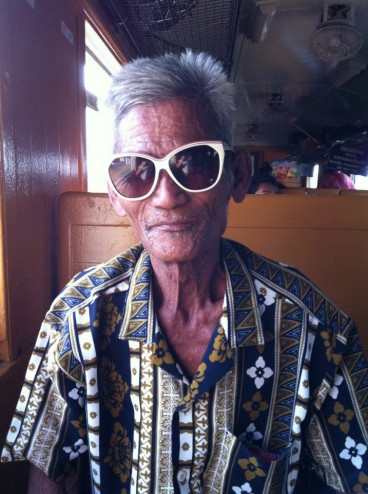
There are at least ten examples, but I won’t share them all. Instead I’ll share the one that contained the most significant lesson for me about flow.
Angkor Wat, at sunrise, crowds flock regardless of the time. They find their spot to take “the famous shot” of the ruins, with reflection over the water. They wait.
Jonny and I started to do the same. But within a few minutes an idea struck us like lightening: “if everyone’s out here, does that mean no one’s inside?” It was still pitch black. We had time…
We walked passed the waiting crowds, up the main entrance, smiled at the security man, wandered around alone in this ancient spiritual wonderland. We arrived a few people sitting around near a steep set of stairs leading up to the top of Angkor Wat, but a rope blocked it off “for maintenance.” A policeman slow walked toward us. “You want to go up?” he asked.
“Yes, of course.” we answered eagerly. The policeman tilted his head, motioned a “well…” Jonny slipped him a $10US, and we were up. The top of Angkor Wat, alone at sunrise!
Bridge pose – at the top of Angkor Wat:

When we finally got outside, the first part of the sun started peaking over the trees. We hadn’t even missed “the shot”! But I like this one better – all the “suckers” who stood waiting, while we experienced the true wonder of Angkor’s majesty:

It’s moments like this one that are worth meditating on, at least once a day.
This is a snippet from my diary at 10am while eating breakfast back at the hotel:
“Angkor… words fail. Lifetimes of thousands of artisans, maybe millions of peoples life times, dedicated to building – designing, creating, carving – these exquisite temples. Life – humans, animals, plants and their infinite parts – emerge from their time and place to form patterns within yet greater wholes. Our breath is part of the pattern; our birth and death; our societies; our civilizations; come and go – all part of the pattern of “God” (if one wishes to call It that).
Today we experienced something that was ‘not atheism and not religion’ – an experience of wonder, awe and mystery, an experience of past meets present meets future, an experience of stars aligning and a natural yet surreal magic moment.
‘Good luck to you and your family, and for longevity,’ a monk handed us incense, we bowed three times, said a small prayer and he tied a red cotton weave around our wrists.
I feel a deep gratitude, and an all-consuming happiness, perspective and hope.
We were one of thousands to arrive at Angkor Wat for sunrise, and tens of thousands to visit Angkor Wat that day, yet we were the first and only two to enter the holy place upstairs, and to explore it, meditate in it, and photograph it without another soul in sight. Breathing in the past and sighing out to the future.
This was a reminder of what it means to ‘connect to the universe’ and be ‘one with God’ in the sense of being in tune, being on the frequency, that seems to pull, to persuade, and to facilitate, one to live their life to its full potential. It is a universal drive to greater complexity with harmony. Positive conflict is a key.
The tide is often strong. People naturally go with it, even if it is not going in the direction they wish to go. Yet we are strong enough to swim against the tide and discover worlds that lie unnoticed to sheep who follow each other.
Is this a secret that should be shared? If even anyone else had thought outside the square and entered Angkor Wat instead of waiting outside, then we would not have been alone. The policeman might not have taken a bribe, and we might not have climbed to the top.
Here lies a paradox: what is good for one is not good for all. Unique experience comes from exceptions, and if even a third of the majority were exceptions then it would no longer be exceptional.
Civilisations rise and fall.
Species evolve and go extinct.
Planets, suns and galaxies, maybe even universes, cannot escape the ebb and flow.
The phenomena of life. The ever-changing process.
This can be interpreted as futile and meaningless. Or as having the highest value and ultimate meaning. We are small temporal expressions of this infinitely large cosmic process.”
It goes on, and on, but I’ll leave it there…
It is interesting that we remember and admire the exceptional things that civilizations do, not their normal every day lives.
“Flow” for one person may mean swimming against the tide, but if it is flow the that tide will part and you won’t tire.
I think it can be hard to find your flow, but once you have found it and are aligned with it, the challenge is not to be caught up in the tide. You must listen to your intuition, have faith in the flow, in what your gut is telling you, and move with it. It’s in that space that the greatest moments and greatest achievements occur.

A few other examples of flow in Cambodia, January 2013:
We were the only guests on this island off Sihanoukville:


Or at least we thought we were—until the next day when we discovered another awesome hippy dwelling:

Maybe this one is not so out of the ordinary. It’s a small world when it comes to Aussies in popular backpacker destinations… 6:30am getting on a boat from Phnom Phen to Siem Reap, I hear “Juliet”—and I turn to see a member of the Sydney Peace Foundation’s Executive Council!

A friend recommended the Shanghai Mansion in Bangkok. The best value hotel I’ve ever experienced. Buffet breakfasts. And a grrooovy jazz bar:

On our last night, after days of travelling, we were welcomed with a free upgrade for our last night. If you need a place to stay in Bangkok, the Shanghai Hotel is a gem.
Now, back in Sydney, the clarity still interweaves with confusion. But moments of synchronicity affirm my path.
It takes active engagement to keep that feeling: questioning the direction I’m headed and adjust when it feels as if I’m losing my way. Right now I feel more or less “in the flow”, but it is a challenge not to let the tide take me in other directions.
When I’m in the flow I feel aligned with my destiny, even if I do not know what that destiny is…
In 4 weeks I am going on a work trip to Paris. I hope that the “flow” travels with me there.

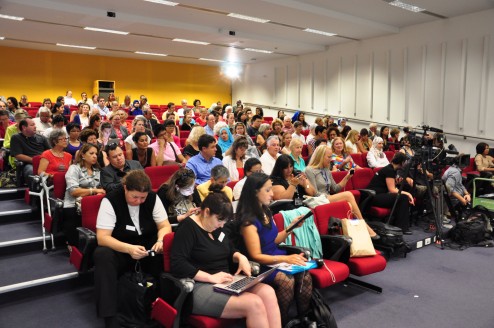
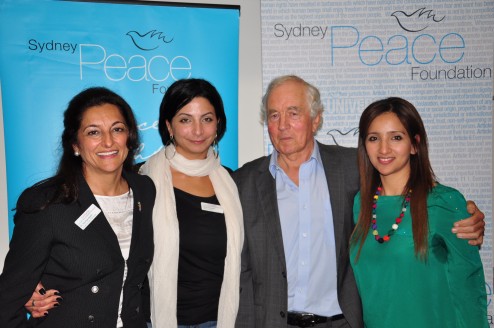
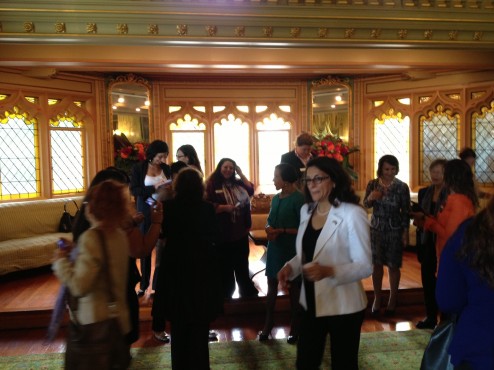


















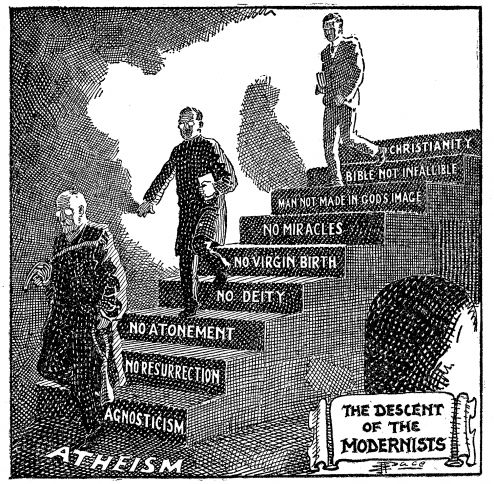

 [2]
[2]

 ‘Extensive studies of colour perception over several decades have made it clear that there are no colours in the external world, independent of the process of perception.’
‘Extensive studies of colour perception over several decades have made it clear that there are no colours in the external world, independent of the process of perception.’